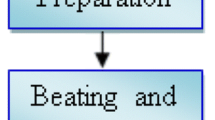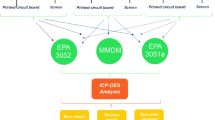Abstract
Recycling of wastepaper has been shown to increase the concentration of metals in the product. Although it is generally assumed that there is no risk of migration of chemical contaminants from recycled paper and board into food, the UK Food Standards Agency has identified limited evidence of such migration. Therefore, it is important to carry out research to establish the concentration of metals in recycled paper and board in contact with food. A previous study at Imperial College had resulted in the development of a neutron activation analysis method to determine trace metals in plastic packaging. This paper describes an initial study to establish whether the same methodology could be applied to paper and board and to carry out a preliminary investigation into a small range of recycled paper and board products. The study was made on 22 elements in 17 products including pizza boxes, fries boxes, kitchen towel, table napkins, greaseproof paper, tea bags and cake cases. This work has shown elevated levels of some elements including barium (69 mg/kg in pizza bases) and chromium (5 mg/kg in napkins, 50 mg/kg in greaseproof paper, 2 mg/kg in cake cases, 90 mg/kg in baking parchment, 5 mg/kg in fries boxes and 5 mg/kg in pizza bases).
Similar content being viewed by others
References
Council of Europe, Council of Europe Resolution AP (96) 4 on maximum and guideline levels and on source-directed measured aimed at reducing the contamination of food by lead, cadmium and mercury. Adopted by the Committee of Ministers on 2 October, 1996.
British Standards, Specification for vegetable parchment for wrapping dairy and other food products, BS 1820, British Standards Institute, London, 1961.
R. D. Isabell, The total and extractable heavy metal content of paper and board, PB12 (R)/ 1978, PIRA, Leatherhead, 1978.
V. D. Arrigo, Rassegna Chimica, 1 (1976) 12.
R. W. Praskievicz, A. S. Y. Subt, Determination of heavy metal contamination in printing inks, PAPPI-CPPA Fall Graphic Arts Conference Papers, Oct, 1976.
L. Castle, C. P. Offen, M. J. Baxter, J. Gilbert, Food Additives Contam., 14 (1997) 35.
D. Thompson, S. J. Parry, R. Benzing, J. Radioanal. Nucl. Chem., 195 (1995) 209.
British Standards, Paper and board intended to come into contact with foodstuffs. Preparation of a hot water extract BSEN647: 1994 British Standards Institute, London, 1994.
V. Hamm, A. Geller, L. Gottsching, Papier, 40 (1986) 37 (in German).
Author information
Authors and Affiliations
Rights and permissions
About this article
Cite this article
Parry, S.J. Neutron activation analysis of recycled paper and board in contact with food. Journal of Radioanalytical and Nuclear Chemistry 248, 143–147 (2001). https://doi.org/10.1023/A:1010606914821
Issue Date:
DOI: https://doi.org/10.1023/A:1010606914821




